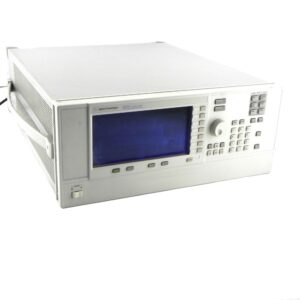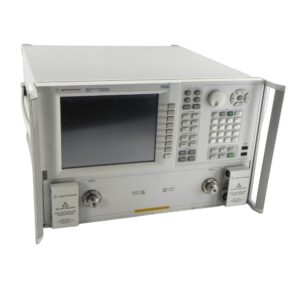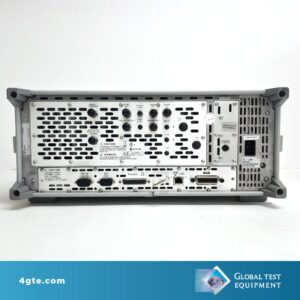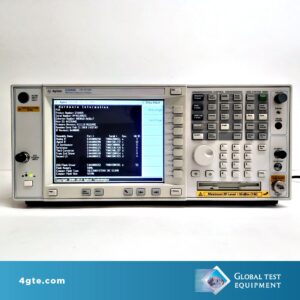Description
Frequency Resolution: 1 Hz
Frequency Stability – Aging: <5×10-6 / year
Temperature: <5×10-6 over +15°C to +50°C
Power Control Range: >20 dB. The minimum absolute level for power sweep is -15 dBm while the maximum power output for a unit is typically
+10 dBm, depending upon configuration.
Source Power Level: The source power (dBm) may be set from the front panel menu or via GPIB. Port 1 power level is settable from +10 dBm
(on the simpler test sets, ranging to +5 dBm on the most complex) to –15 dBm with 0.01 dB resolution. In addition, the Port 1 (and Port 3) power may be
attenuated in 10 dB steps using the internal 70 dB step attenuator. Port 3 step attenuator is not available in D models. Port 1 step attenuator is optional
in A models.
Power Level Accuracy: ±1 dB to 6 GHz, ±1.5 dB to 9 GHz (no flat power calibration applied; full-band frequency sweep at -15 dBm, 0 dBm,
and maximum rated power).
Level Test Port Power: The power, at all sweep frequencies, is leveled to within ±1dB to 6 GHz (±1.5 dB to 9 GHz). Only Port 1 and Port 3
(if installed) can be power calibrated.
Harmonics and Spurious (at Maximum Rated Power): <–25 dBc for MS4624x, <–30 dBc for all other models.
Sweep Type: Linear, CW, Marker, or N-Discrete point sweep.
Power Sweep Range: 20 dB (minimum)
Power Meter Correction: The MS462xx offers a user-selectable feature that corrects for test port power variations and slope on Port 1
(or Port 3 when the optional internal source is installed) using an external Anritsu ML2437A or ML2438A power meter. Power meter correction
is available at a user-selectable power level, if it is within the power adjustment range of the internal source. Once the test port power has been
flattened, its level may be changed within the remaining power adjustment range of the signal source.
Multiple Source Control Capability: Multiple Source Control capability allows a user to independently control the frequencies of up to four sources
(two internal and two external or one internal and three external) and the receiver without the need for an external controller. The frequency ranges and
output powers of each source may be independently specified. A frequency sweep may be comprised of up to five separate bands, each with independent
source and receiver settings, for convenient testing of frequency translation devices such as mixers. Up to five sub-bands may be tested in one sweep.
This feature enables users to easily test mixers, up/down converters, multipliers, and other frequency conversion devices.



